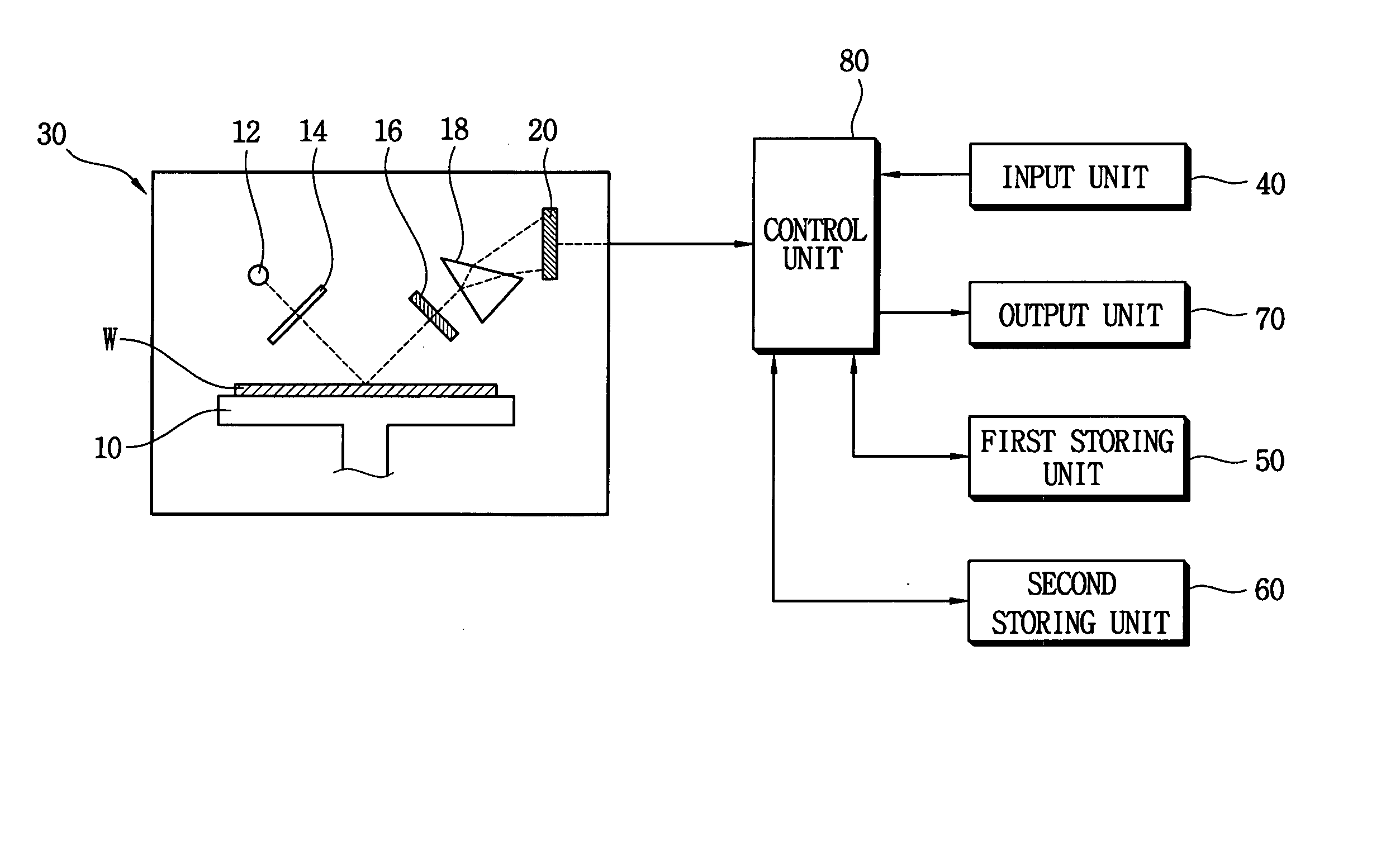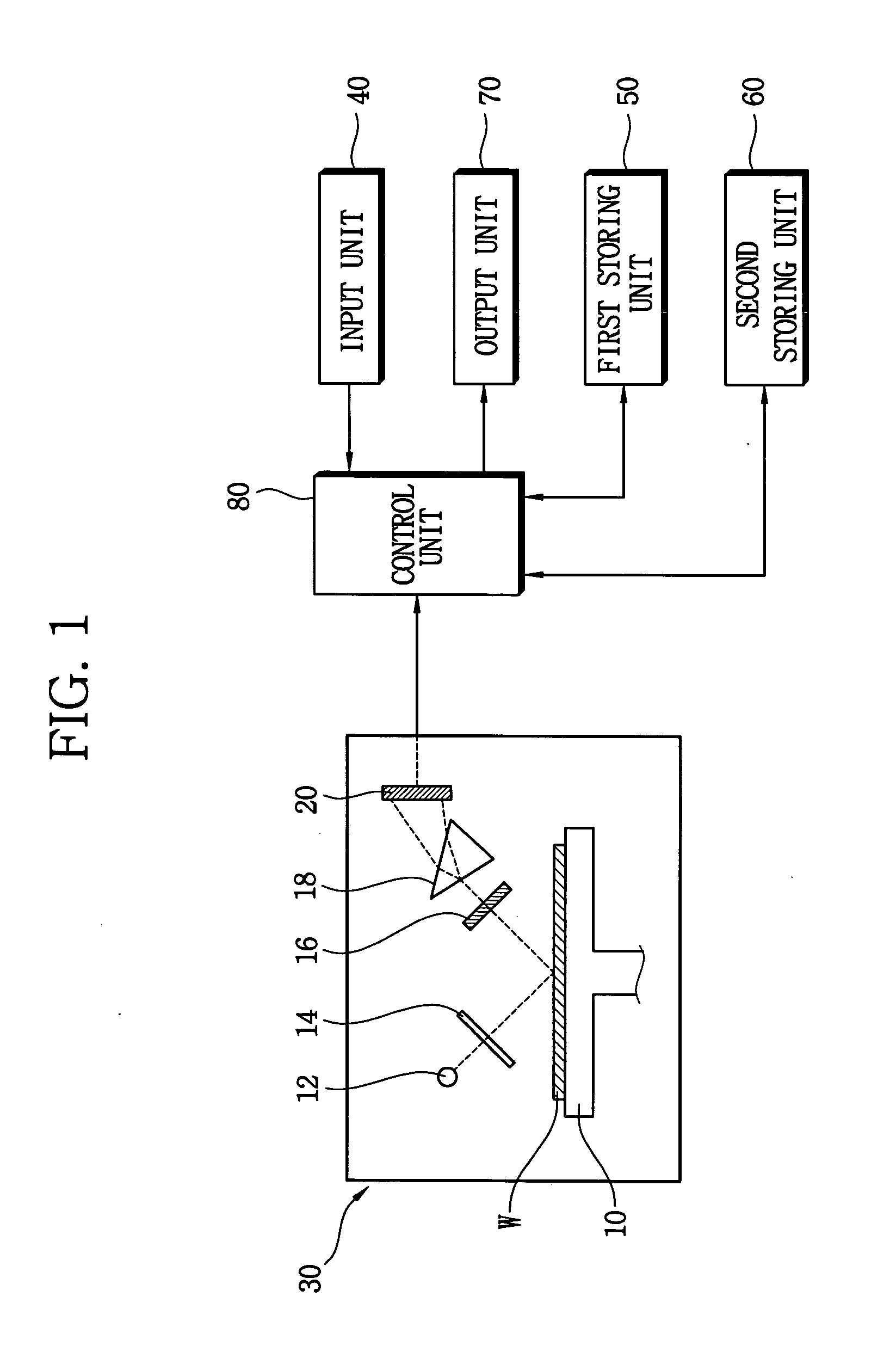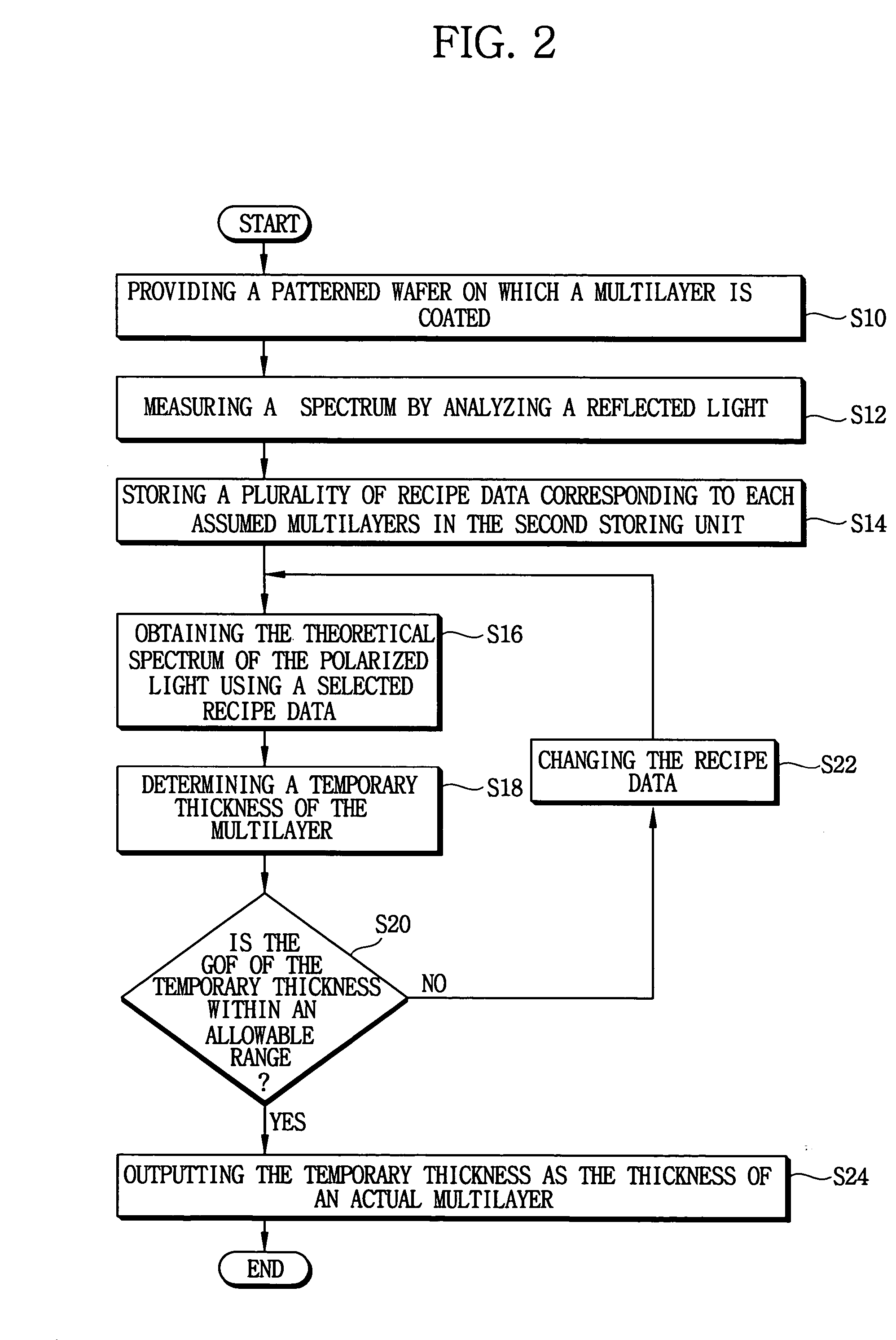Apparatus and method for measuring each thickness of a multilayer stacked on a substrate
a multi-layer, substrate technology, applied in the direction of optical radiation measurement, semiconductor/solid-state device testing/measurement, instruments, etc., can solve the problems of inaccurate measurement thickness, high cost of monitoring process, and inability to measure thickness accurately
- Summary
- Abstract
- Description
- Claims
- Application Information
AI Technical Summary
Benefits of technology
Problems solved by technology
Method used
Image
Examples
first embodiment
[0064] First Embodiment
[0065]FIG. 2 is a flow chart for explaining a method of measuring a thickness of a multilayer according to a first embodiment of the present invention.
[0066] As shown in FIG. 2, in step S10, a patterned wafer on which a multilayer is coated is provided. A plurality of oxide sites (OS) is formed in a scribe line of the patterned wafer to check various process failures that may be generated during various processes. At least one of the plurality of OS has a stacked structure for measuring the thickness of the multilayer. Accordingly, the thickness of the multilayer on the patterned wafer is measured at the OS having the stacked structure.
[0067] In an exemplary embodiment, the method assumes that first through fifth layers were sequentially initially coated on an OS, and the fourth and fifth layers were sequentially etched away from the OS during an etching process. Therefore, the measuring apparatus of the present invention described above measures each thickn...
second embodiment
[0082] Second Embodiment
[0083]FIGS. 3A to 3E illustrate cross-sectional views of various hypothetical multilayers that may correspond to an actual multilayer formed on the patterned wafer.
[0084] A patterned wafer, on which a multilayer is formed, is loaded into a process chamber. In an exemplary embodiment, the multilayer on the patterned wafer is formed as follows: a first silicon nitride layer 102 having a thickness of about 260 Å, a first silicon oxide layer 104 having a thickness of about 750 Å, a second silicon nitride layer 106 having a thickness of about 500 Å, a second silicon oxide layer 108 having a thickness of about 5500 Å, a third silicon nitride layer 110 having a thickness of about 600 Å, a third silicon oxide layer 112 having a thickness of about 13,000 Å and a fourth silicon nitride layer 114 having a thickness of about 3000 Å are sequentially stacked in that order on an upper surface of a silicon wafer 100, as shown in FIG. 3A. Then, the fourth silicon nitride lay...
third embodiment
[0100] Third Embodiment
[0101] Elements and processes of a third embodiment of the present invention are substantially similar to those of the second embodiment of the present invention, except for a measuring sequence.
[0102] A patterned wafer, on which a multilayer is formed, is loaded into a process chamber. In an exemplary embodiment, the multilayer of the patterned wafer is supposed to be formed in the same process like the patterned wafer of the second embodiment described above. Specifically, the patterned wafer includes a first silicon nitride layer having a thickness of about 260 Å, a first silicon oxide layer having a thickness of about 750 Å, a second silicon nitride layer having a thickness of about 500 Å, and a second silicon oxide layer having a thickness of about 4500 Å sequentially stacked in that order from an upper surface of a substrate after an etching process.
[0103] Polarized light is directed onto a first OS, and reflected light reflected from the first OS is d...
PUM
 Login to View More
Login to View More Abstract
Description
Claims
Application Information
 Login to View More
Login to View More - R&D
- Intellectual Property
- Life Sciences
- Materials
- Tech Scout
- Unparalleled Data Quality
- Higher Quality Content
- 60% Fewer Hallucinations
Browse by: Latest US Patents, China's latest patents, Technical Efficacy Thesaurus, Application Domain, Technology Topic, Popular Technical Reports.
© 2025 PatSnap. All rights reserved.Legal|Privacy policy|Modern Slavery Act Transparency Statement|Sitemap|About US| Contact US: help@patsnap.com



